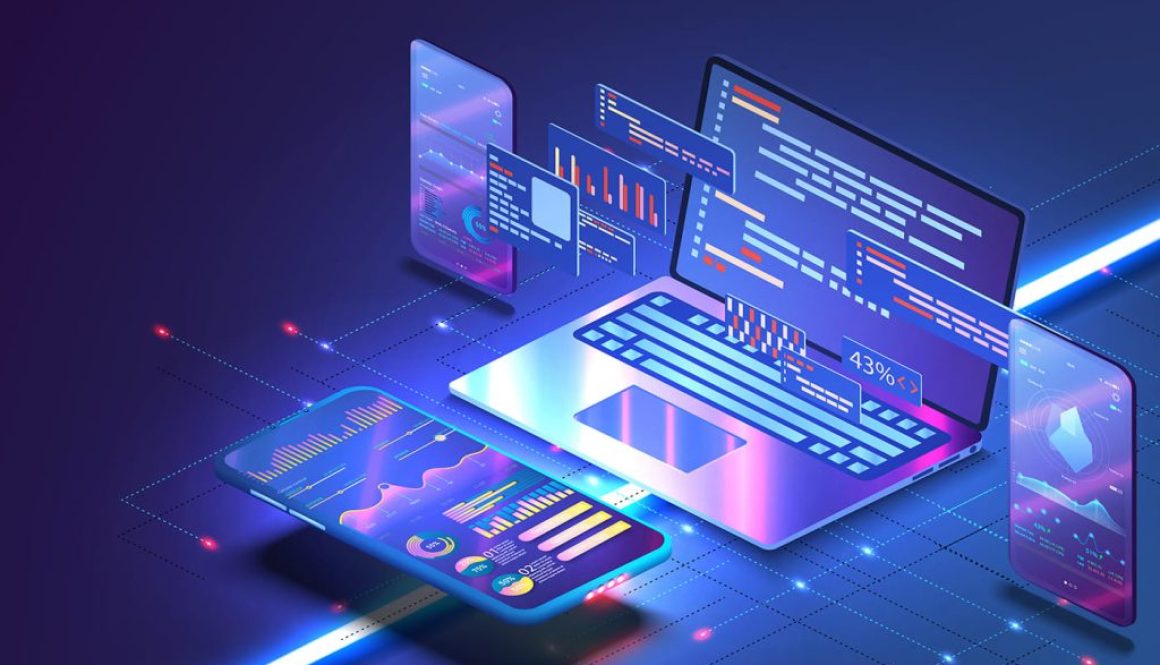The Future of the Web: Key Trends Defining the Digital Landscape in 2025
The internet is evolving faster than ever before. What began as a static information-sharing network has transformed into a complex, interactive, and intelligent ecosystem that powers global commerce, communication, and innovation. In 2025, the pace of change is accelerating, fueled by advancements in artificial intelligence, web development technologies, cybersecurity, and immersive digital experiences.
This article explores the most important trends shaping the future of the web and how businesses, developers, and users can adapt to this new era.
1. The Rise of AI-Driven Web Experiences
Artificial intelligence has moved from being a behind-the-scenes tool to a central player in web design and user experience. AI-powered chatbots, content generation tools, and recommendation engines are transforming how websites interact with users.
In e-commerce, for example, AI can analyze browsing patterns and purchase history to deliver hyper-personalized shopping suggestions. In content platforms, AI assists in curating feeds, generating summaries, and even creating original material tailored to user interests.
For developers, integrating AI APIs and machine learning models into websites is becoming a standard practice. The challenge now lies in balancing personalization with privacy, ensuring that AI delivers value without crossing ethical boundaries.
2. Web3 and Decentralized Platforms
The concept of Web3—an internet built on blockchain technology—continues to gain traction. Decentralized applications (dApps) are offering users greater control over their data, digital identities, and online transactions. Cryptocurrencies, NFTs, and smart contracts are moving beyond speculation to enable real-world use cases in gaming, finance, and supply chain management.
Major companies are experimenting with decentralized authentication, peer-to-peer marketplaces, and token-based loyalty programs. However, Web3 adoption still faces hurdles such as scalability, regulatory uncertainty, and user education.

3. Progressive Web Apps (PWAs) on the Rise
Progressive Web Apps have been quietly reshaping mobile experiences by combining the accessibility of websites with the performance of native apps. PWAs can work offline, send push notifications, and offer fast load times, making them ideal for businesses that want a mobile-friendly presence without building separate iOS and Android apps.
Tech giants like Google and Microsoft are pushing PWA adoption, while frameworks like React, Vue, and Svelte are making development easier than ever. Expect to see more companies replacing traditional mobile apps with PWAs in the coming years.
4. Cybersecurity Becomes Mission-Critical
As the web becomes more integral to business operations, cyber threats are growing in both volume and sophistication. Phishing attacks, ransomware, and data breaches are costing companies billions annually.
In 2025, cybersecurity is no longer an afterthought—it’s a foundational requirement for any digital project. Website owners are implementing zero-trust security models, multi-factor authentication, and advanced encryption protocols. AI-driven threat detection systems are helping identify and neutralize attacks in real time.
For web developers, security skills are now as important as coding ability. From secure APIs to ethical hacking, cybersecurity is a core part of modern web development.
5. The Era of Immersive Web Experiences
Thanks to WebXR and improved browser capabilities, immersive technologies like virtual reality (VR) and augmented reality (AR) are entering the mainstream web. Retailers can now offer 3D product previews, real estate agents can host virtual property tours, and educators can create interactive learning environments—all accessible through a standard web browser.
This shift is blurring the lines between websites and fully interactive applications. As 5G and fiber internet become more widespread, the demand for rich, immersive experiences will only grow.
6. No-Code and Low-Code Development
The democratization of web development is accelerating through no-code and low-code platforms. Tools like Webflow, Bubble, and Wix Studio allow non-technical users to create sophisticated websites and applications with drag-and-drop interfaces.
While professional developers are still essential for complex, large-scale projects, no-code solutions are empowering entrepreneurs, small businesses, and creatives to launch products quickly and affordably. In many organizations, developers now collaborate with “citizen creators” who use these platforms to prototype and test ideas.
7. The Push for Accessibility and Inclusive Design
Web accessibility is no longer just a compliance issue—it’s a competitive advantage. Making websites usable for people with disabilities expands the potential audience and demonstrates social responsibility.
In 2025, inclusive design principles are becoming standard practice. Developers are integrating features like screen reader compatibility, voice navigation, and adaptable color schemes. Search engines are also starting to factor accessibility into rankings, further incentivizing businesses to prioritize it.
8. Search is Becoming Smarter and More Visual
Search engine technology is evolving beyond traditional keyword matching. AI-driven semantic search is enabling more accurate results based on user intent, context, and natural language processing.
At the same time, visual search tools—where users upload an image to find similar products or information—are becoming popular in e-commerce and content discovery. For businesses, optimizing websites for both text-based and visual search is now essential for staying competitive.
9. Cloud-Native Web Infrastructure
Web hosting is moving toward cloud-native solutions that prioritize scalability, flexibility, and resilience. Platforms like AWS, Google Cloud, and Azure are enabling developers to deploy applications across distributed networks, ensuring faster load times and higher uptime.
Edge computing is also reducing latency by processing data closer to the user, making web applications more responsive. This is particularly important for gaming, streaming, and real-time collaboration tools.

10. Ethical and Sustainable Web Practices
The environmental impact of the internet is becoming a growing concern. Data centers consume vast amounts of energy, and constant streaming, storage, and computation have a carbon footprint.
In response, businesses are adopting sustainable web practices, such as optimizing code for efficiency, using green hosting providers, and reducing unnecessary data transfers. Ethical considerations—such as responsible data usage and transparent algorithms—are also shaping public trust in digital platforms.Preparing for the Next Phase of the Web
The tech and web landscape in 2025 is both exciting and challenging. Businesses, developers, and users must adapt to a digital world that is smarter, more immersive, and more interconnected than ever before.
For businesses, staying competitive means investing in AI integration, cybersecurity, and immersive user experiences. For developers, mastering new frameworks, accessibility standards, and security protocols is essential. For everyday users, understanding digital literacy, data privacy, and ethical web use will be key to navigating the evolving online world.
The web’s next chapter is being written now—and those who embrace innovation while prioritizing security, inclusivity, and sustainability will lead the way.

